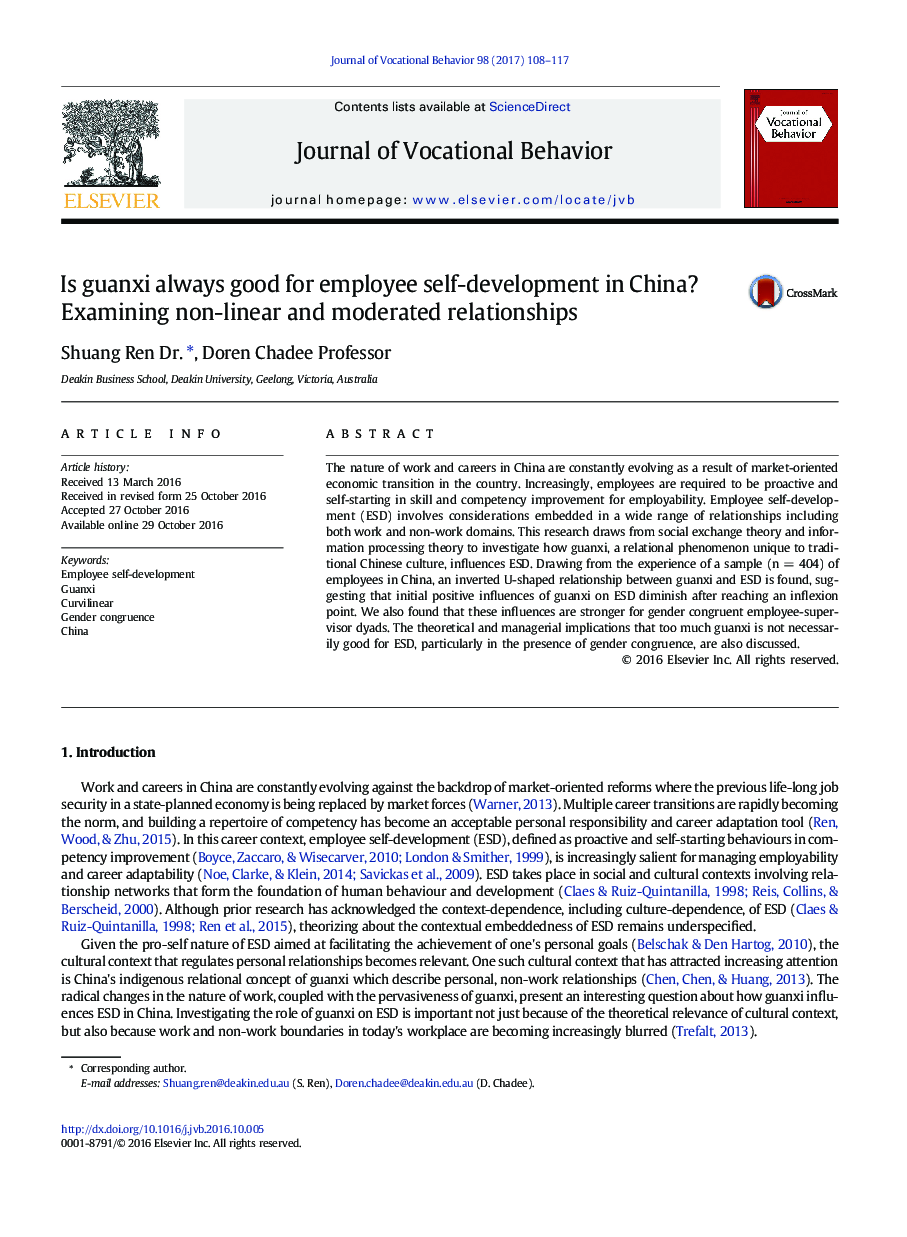| کد مقاله | کد نشریه | سال انتشار | مقاله انگلیسی | نسخه تمام متن |
|---|---|---|---|---|
| 5035173 | 1471802 | 2017 | 10 صفحه PDF | دانلود رایگان |
- The relationship between guanxi and employee self-development is characterised by an inverted U-shaped relationship.
- Gender congruence negatively moderates the relationship between guanxi and employee self-development.
- Social exchange theory and information processing theory are used as the theoretical guides.
The nature of work and careers in China are constantly evolving as a result of market-oriented economic transition in the country. Increasingly, employees are required to be proactive and self-starting in skill and competency improvement for employability. Employee self-development (ESD) involves considerations embedded in a wide range of relationships including both work and non-work domains. This research draws from social exchange theory and information processing theory to investigate how guanxi, a relational phenomenon unique to traditional Chinese culture, influences ESD. Drawing from the experience of a sample (n = 404) of employees in China, an inverted U-shaped relationship between guanxi and ESD is found, suggesting that initial positive influences of guanxi on ESD diminish after reaching an inflexion point. We also found that these influences are stronger for gender congruent employee-supervisor dyads. The theoretical and managerial implications that too much guanxi is not necessarily good for ESD, particularly in the presence of gender congruence, are also discussed.
Journal: Journal of Vocational Behavior - Volume 98, February 2017, Pages 108-117
